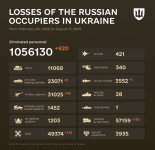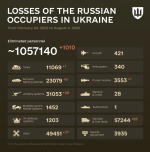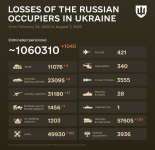Russian oil refineries hit again.....
Overnight, Ukrainian drones hammered six Russian regions - destroying oil refineries in Samara, Ryazan, and Feodosia. Military communications in Penza were knocked out. Airports shut down. Fuel depots ablaze. Over 112 drones overwhelmed Russian defenses in the largest deep strike to date.
Russia’s energy backbone was shattered. Command centers were blinded. And now, as internet blackouts and refinery fires spread, Putin’s war machine is paralyzed.
The second video talks about Putin hiding the real economic numbers from the Russian public.
Does THAT ^ sound familiar???
We. Told. Them. So.
Last edited:



